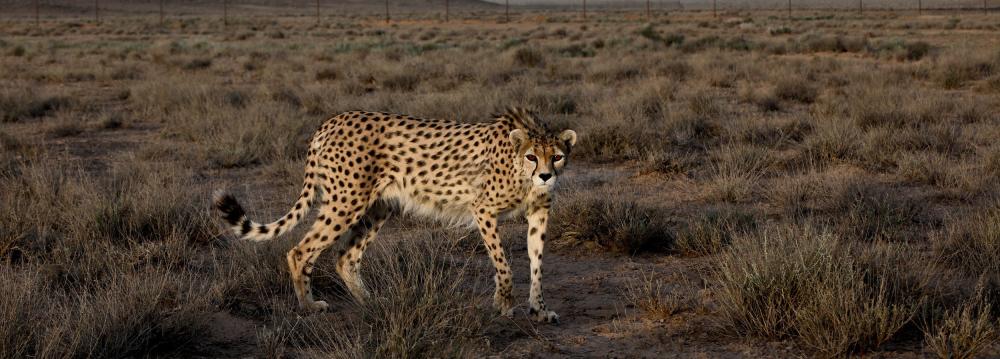The Asiatic cheetah that once roamed lands from the Arabian Peninsula to India only survives in Iran today, but its population is shrinking in its last home that currently has fewer than 50 of them.
Despite measures to protect the critically endangered animal, the species is still threatened by multiple factors, including the destruction of habitats, road construction, lack of prey and the presence of cattle and sheepdog among others.
This has prompted Iranian officials and global conservationists to join forces to protect the animal, IRNA reported.
A five-year strategic plan for the future of Asiatic Cheetah has recently been drafted by the Conservation of the Asiatic Cheetah Project and officials from the United Nations Development Program.
According to Houman Jokar, the head of CACP, the plan involves short-, medium- and long-term measures, including captive breeding, reforming management structure and educating farmers and local people.
"The scheme will be finalized in the next two months," he said.
Past and Present Efforts
Initiated in 2001 by Iran's Department of Environment in cooperation with the United Nations Development Program, CACP is the main entity responsible for protecting the species.
Jokar said effective measures have been taken by the project but have not been enough to pull the endangered species back from the verge of extinction.
Road accidents are among the main causes of cheetah's mortality. To curb the problem, a plan was devised to build fences along the high-risk parts of roads going through their habitats in Semnan Province (known as Abbasabad region) with the aim of reducing road fatalities.
Although the provincial office of Iran Road Maintenance and Transportation Organization agreed to undertake the project and allocated 10 billion rials ($260,000), it has not yet kicked off.
"The office had pledged to initiate the plan in April but it has been delayed due to certain issues with the contracting company," Jokar said, without naming the company.
With the arrival of the cold season, cheetah's roaming is expected to increase and they are more likely to approach the roads, making the erection of fences all the more urgent.
"If IRMO fails to put up the fences in time, we will carry it out ourselves with support from the public campaign," he said, stressing that there is no time to lose.
The high-risk area in Abbasabad extends for 12 square kilometers, but studies showed that only half the area can be secured with fences with this budget.
A number of underpasses have also been planned to be built to allow the animals to safely cross the roads.
"There are numerous water canals in this region, seven of which are suitable to be turned into underpasses," Jokar said.
CACP has also installed warning signs for drivers at a 500-meter distance from the high-risk area on both sides of the road.
In 2007, Asiatic Cheetah Society designated August 31 as the National Day for Asiatic Cheetah and it has been observed ever since.


